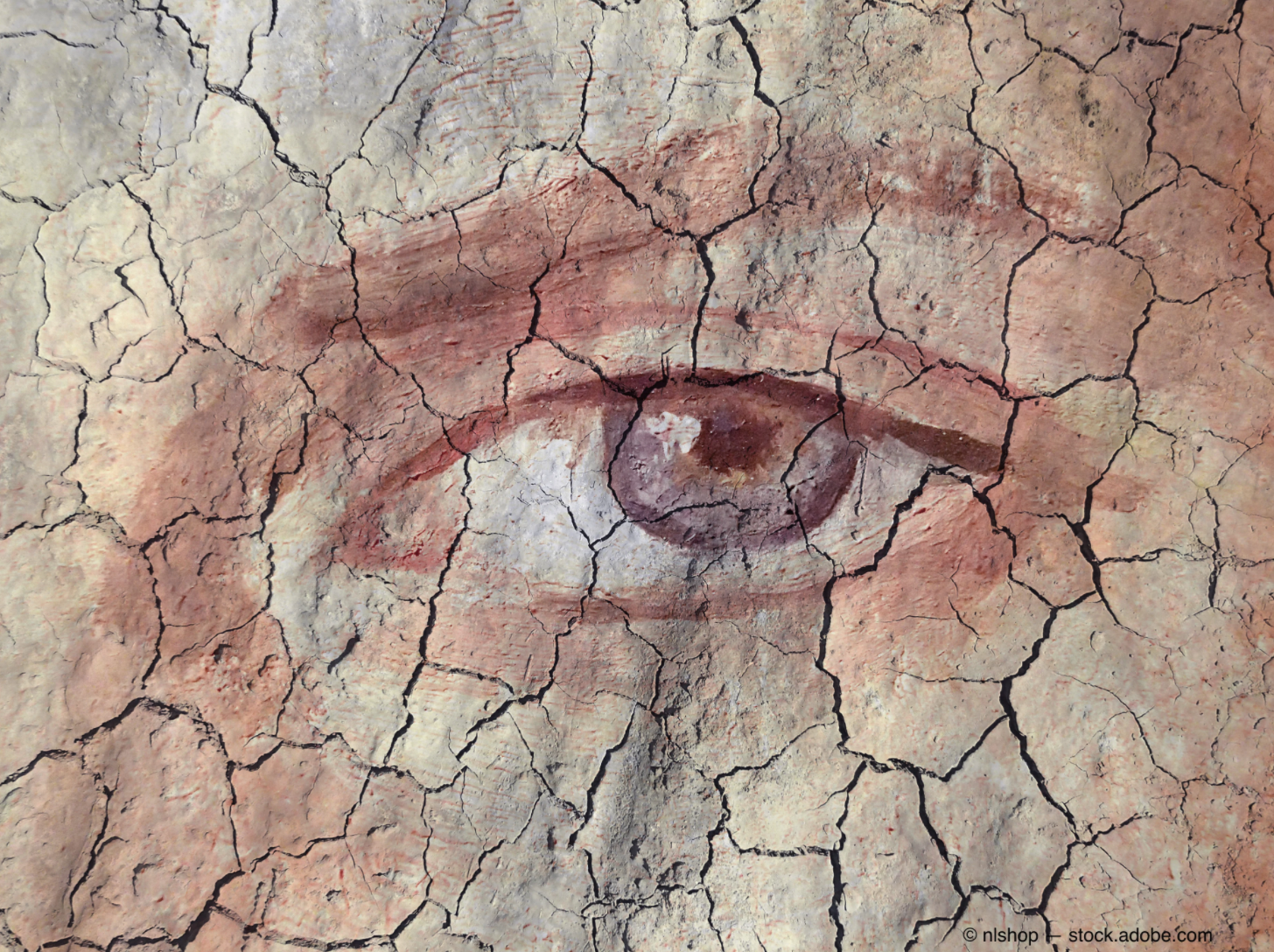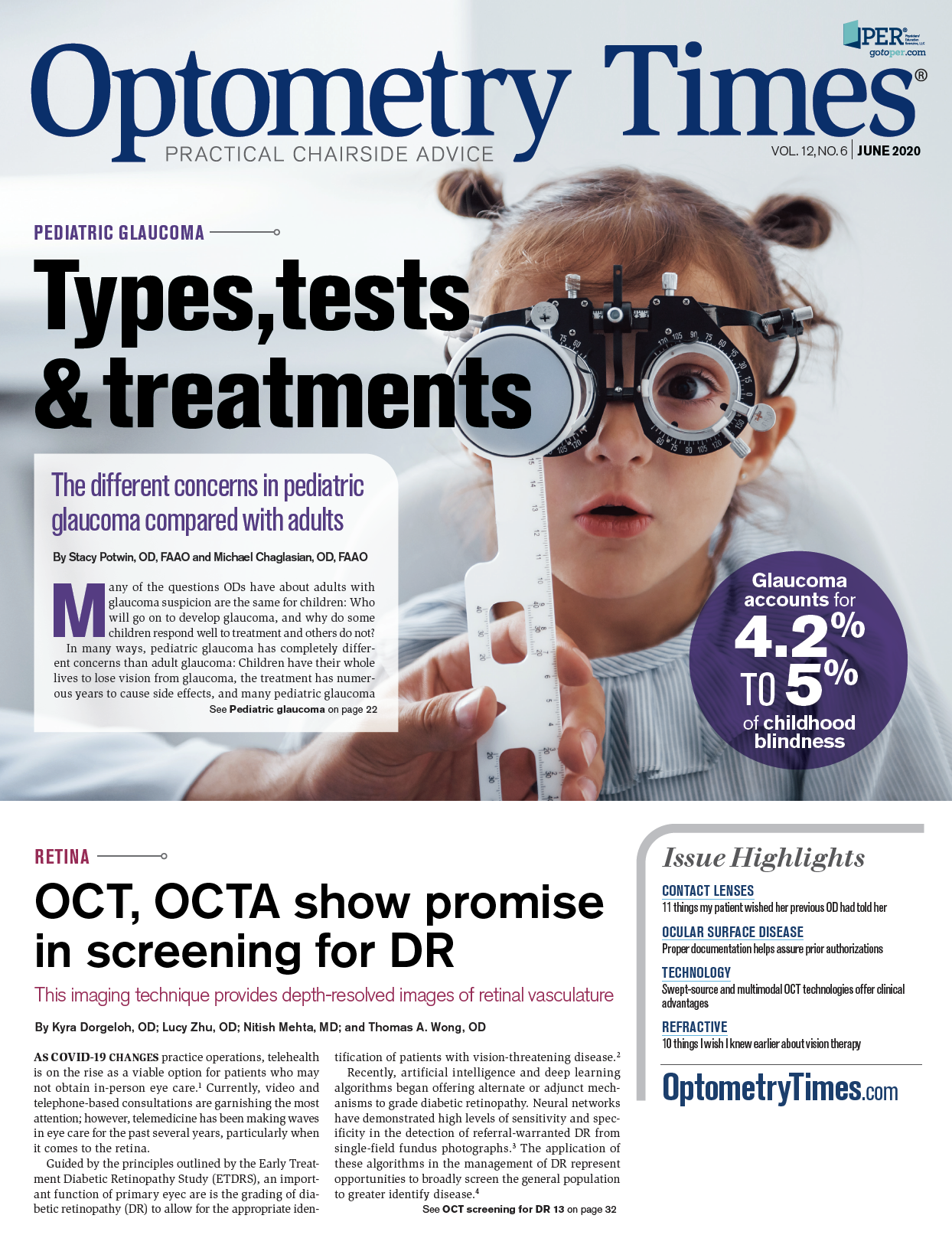Lactoferrin levels can diagnose dry eye disease
New test allows distinction between causes of symptoms.

Effective diagnosis of dry eyes versus ocular allergies enables the correct treatment to be administered. A rapid test to measure lactoferrin levels in tear fluid, with results available while the patient is still in the chair, allows a diagnosis of dry eye disease to be made with confidence.
It should come as no surprise to eyecare practitioners who address dry eye in their practices that a nutritional approach to this disorder is effective. Unfortunately, most practitioners do not adequately test for the source of dry eye and instead attempt to offer a “blanket” approach that might or might not work.
However, with proper testing, a comprehensive nutritional approach can be valuable for addressing both aqueous deficient dry eye (ADDE) and evaporative dry eye (EDE). This process would be more expedient if we could distinguish between the two forms quickly and accurately, as well as confirm the diagnosis of dry eye disease (DED) versus allergic conjunctivitis.
Related: Minimize symptoms of dry eye disease in refractive surgery patients
Clinical tests
Because there are many causes of DED, it is a challenge to efficiently test for the cause of the disorder. Most practitioners rely on one of the many questionnaires that are available, but these take some time to complete and depend on patient recall of their symptoms. Dry eyes and ocular allergies can have many overlapping complaints, making it more challenging to determine the specific disorder needing therapy.
Many clinical tests are available to determine the source of DED. These include tear film breakup time (TBUT), which determines tear film integrity; Schirmer’s test and Menicon Zone-Quick (phenol red thread) for tear volume; TearLab Osmolarity System (TearLab) for osmolarity; vital dyes rose bengal and lissamine green for cell integrity; lid wiper epitheliopathy to observe an increase the friction between the lid margin conjunctiva and the ocular surface; and Advanced Tear Diagnostics TearScan 300 microassay to measure lactoferrin protein and IgE levels in the tear film.
Evaluating the tear layer involves using more than just any one of these tests. Because of the variety of causes and several factors involved in tear film instability, practitioners should incorporate these tests into a pre-examination routine. Any patient who complains of excessive or deficient tearing, redness, irritation, discharge, or any other typical anterior ocular complaint should be screened prior to seeing the doctor.
Getting to the “root”
While much of the media surrounding DED focuses on lipid layer enhancement due to meibomian gland dysfunction, just adding “fish oil” to a tear layer is not adequate to resolve the underlying source of the disease process.
One analogy to consider is a visit to the dentist with a cavity in one tooth. The dentist would not think of just “capping” the tooth without treating the underlying root to address the source of the degeneration. Likewise, simply enhancing the lipid layer of the tears without addressing the “root” of the tear layer (the mucin layer) will not manifest a complete solution to the problem.
Related: How to educate patients about dry eye
Lactoferrin a DED indicator
Lactoferrin is an antiviral, antibacterial iron-binding glycoprotein that is vital to tear production. It is also a mucus-specific anti-inflammatory molecule. Serum lactoferrin is produced by acinar cells in the lacrimal gland and possibly also from tear neutrophils during infection and inflammation. By binding iron, lactoferrin prevents the pathogen from obtaining sufficient iron, which it relies upon for growth.1-3
The name comes from two root words: “lacto,” referring to milk (and specifically “first milk” from lactation), and “ferrin,” referring to its iron-binding nature. Due to its action in mucosal tissue, lactoferrin in tear fluid has been shown to be decreased in DEDs such as Sjögren’s syndrome.4,5 Lactoferrin was found to be negatively correlated to rose bengal staining, indicating that reduced lactoferrin was a marker of ocular surface damage. However, in EDE in the absence of epithelial defects, tear lactoferrin was also found to be reduced.6
A rapid, portable test utilizing microfluidic technology has been developed (TearScan 300 MicroAssay System) to enable measurement of lactoferrin levels in human tear fluid at the point of care, with the aim of improving diagnosis of Sjögren’s syndrome and other forms of DED.7
Lactoferrin’s primary role is to bind to free iron and, in doing so, remove the substrate required for bacterial growth.1 The antibacterial action of lactoferrin is also explained by the presence of specific receptors on the cell surface of microorganisms. Lactoferrin binds to bacterial walls, and the oxidized iron part of the lactoferrin oxidizes bacteria. This affects membrane permeability and results in cell lysis.
Related: How to create an ocular surface disease treatment protocol
Lactoferrin has other antibacterial mechanisms, such as stimulation of phagocytosis.7 It not only disrupts the membrane but can also penetrate into the cell. Its binding to the bacterial wall is associated with the specific peptide lactoferricin, and it is produced by splitting lactoferrin with another protein, trypsin.2,3
Lactoferrin also has antiviral actions. One common mechanism of antiviral activity of lactoferrin is its separation of viruses from their target cells. Many viruses tend to bind to the lipoproteins of cell membranes and then penetrate into the cell.8 Lactoferrin binds to the same lipoproteins, thereby repelling the virus particles. Besides interacting with the cell membrane, lactoferrin directly binds to viral particles.8 Lactoferrin also suppresses virus replication after the virus has penetrated into a cell.3,9 Such an indirect antiviral effect is achieved by affecting natural killer cells, which play a crucial role in the early stages of viral infections.
Lactoferrin and lactoferricin, a similar but different protein, also act as antifungal agents, inhibiting the growth of fungi.10 Lactoferrin also acts against Candida albicans, a form of yeast that causes oral and genital infections.11 Lactoferrin seems to bind the plasma membrane of C. albicans, inducing apoptosis.12
Allergic conjunctivitis is also a common clinical presentation, especially during the spring. While the hallmark of itching can be useful in proper diagnosis, the condition features overlapping symptoms with dry eye. The immune system produces IgE antibodies in allergic reactions. These antibodies travel to cells that release chemicals which cause itching and other reactions. An increased total IgE level indicates that it is likely that a patient has one or more allergies. A test with high specificity can help with diagnosis and treatment protocol.
Summary
Differentiation of severe dry eye versus allergic conjunctivitis is important in a clinical setting. New technology is available to facilitate this pro cess, which produces results within the span of a single patient visit.13 Thus, a practitioner can be confident of the diagnosis and proper treatment protocol on the first visit and while the patient is still in the chair. The reimbursable tests can be performed by a technician and can help to establish the practice as a leader in dry eye resolution.
Related: Better manage nocturnal lagophthalmos for dry eye patients
References:
1. Farnaud S, Evans RW. Lactoferrin – a multifunctional protein with antimicrobial properties. Mol Immunol. 2003 Nov;40(7):395-405.
2. Xanthou M. Immune protection of human milk. Biol Neonate. 1998;74(2):121-133.
3. Kuwata H, Yip TT, Yip CL, et al. Bactericidal domain of lactoferrin: detection, quantitation, and characterization of lactoferricin in serum by SELDI affinity mass spectrometry. Biochem Biophys Res Comm. 1998 Apr 28;245(3):764-773.
4. Levay PF, Viljoen M. Lactoferrin: a general review. Haematologica. 1995 May-Jun;80(3):252-267.
5. Ohashi Y, Ishida R, Kojima T, et al. Abnormal protein profiles in tears with dry eye syndrome. Am J Ophthalmol. 2003 Aug;136(2):291-299.
6. Versura P, Nanni P, et al. Tear proteomics in evaporative dry eye disease. Eye (Lond). 2010 Aug;24(8):1396-1402.
7. Karns K, Herr AE. Human tear protein analysis enabled by an alkaline microfluidic homogeneous immunoassay. Anal Chem. 2011 Nov 1;83(21):8115-8122.
8. Sojar HT, Hamada N, Genco RJ. Structures involved in the interaction of Porphyromonas gingivalis fimbriae and human lactoferrin. FEBS Lett. 1998 Jan 30;422(2):205-208.
9. Nozaki A, Ikeda M, Naganuma A, et al. Identification of a lactoferrin-derived peptide possessing binding activity to hepatitis C virus E2 envelope protein. J Biol Chem. 2003 Mar 21;278(12):10162-10173.
10. Puddu P, Borghi P, Gessani S, et al. Antiviral effect of bovine lactoferrin saturated with metal ions on early steps of human immunodeficiency virus type 1 infection. Int J Biochem Cell Biol. 1998 Sep;30(9):1055-1062.
11. Wakabayashi H, Uchida K, Yamauchi K, et al. Lactoferrin given in food facilitates dermatophytosis cure in guinea pig models. J Antimicrob Chemother. 2000 Oct;46(4):595-602.
12. Lupetti A, Paulusma-Annema A, Welling MM, et al. Synergistic activity of the N-terminal peptide of human lactoferrin and fluconazole against Candida species. Antimicrob Agents Chemother. 2003 Jan;47(1):262-267.
13. Chao C, Tong L. Tear lactoferrin and features of ocular allergy in different severities of meibomian gland dysfunction. Optom Vis Sci. 2018 Oct;95(10):930-936.

Newsletter
Want more insights like this? Subscribe to Optometry Times and get clinical pearls and practice tips delivered straight to your inbox.